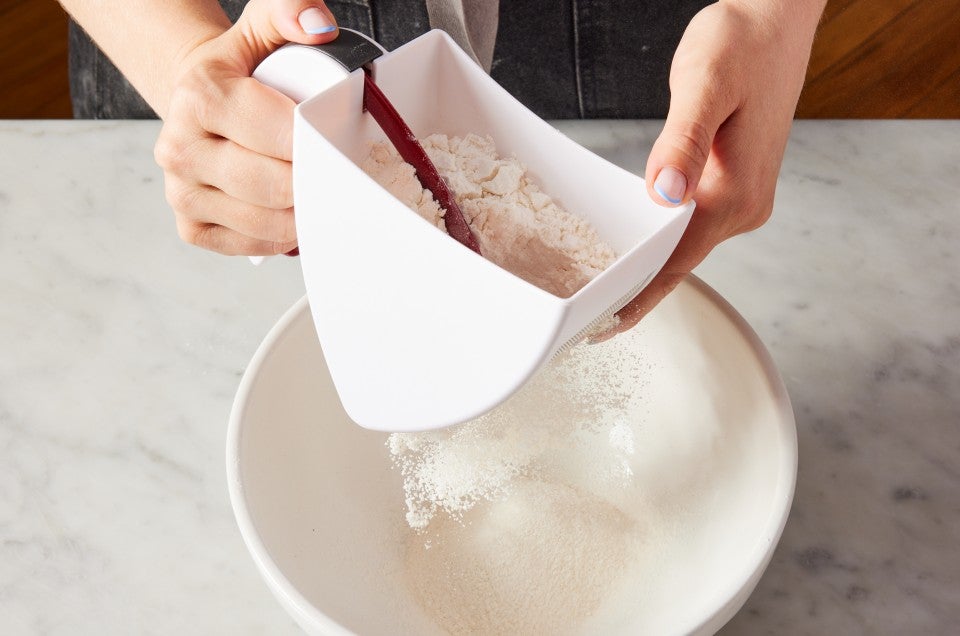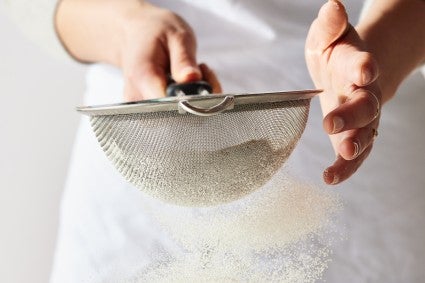Do I really need to sift flour?
Sifting flour can be annoying — here’s why to (sometimes) do it.


Most old-fashioned recipes call for sifting flour and other dry ingredients when baking, but many modern recipes skip this step. Do you really need to sift flour? Occasionally — but for the most part, not anymore.
A sifter is a tool that agitates and pushes dry ingredients like flour, cocoa powder, or confectioners’ sugar through a mesh sieve, eliminating any clumps or lumps. The same effect can be achieved by tapping the ingredient through a fine-mesh strainer.
Sifting flour used to be an essential first step for home cooks, as flours ground in small mills varied a lot in texture and quality and sometimes included extraneous chaff, seeds, or even insects. Today’s commercially milled flours, however, are very finely ground, refined, and well-inspected (no bugs here!). In other words, you don’t need to sift them to guarantee successful baking.

While sifting flour isn’t as necessary today, there are some situations when sifting can improve your baking:

If you don’t have a sifter or sieve, you can approximate sifting by using a whisk. Add your flour to a large bowl or other container, then use a balloon whisk to mix it well until light and fluffy. This will achieve the same goals of breaking up any clumps and aerating the flour, though the results won’t be quite as fine as with a sifter or fine-mesh strainer.
A Scoop & Sift Sifter is handy for any sifting in your future baking, like if you're making this Lemon Chiffon Cake.



November 11, 2024 at 7:32pm
Always sift powdered sugar for decorative icing. Every time I don't, I regret it and lots of swearing ensues.
July 8, 2024 at 3:28pm
I keep my flours in assorted containers and because I don’t use them all that often…unless I’m baking bread, and I don’t do as much of that in the summer months….therefore, I “aerate” my flour before measuring/weighing. I have a scoop in the flour and I fluff it up with that or sometimes I use a balloon whisk to stir it up before using it. I always weigh my ingredients if the recipe includes weights, as experience has taught me there is a HUGE difference between scooping/scraping and weighing. Loved this article. Thank you!
June 30, 2024 at 7:54pm
If flour has been sitting and one sifts it to use in a recipe (and no weight is given), does the quantity need to be adjusted slightly?
July 2, 2024 at 2:12pm
In reply to If flour has been sitting… by CindyAlery (not verified)
Hi CindyAlery, you will want to measure your flour after it is sifted for the most accurate measure. You can stick to the amount that is given in the recipe. Happy Baking!
June 30, 2024 at 11:20am
I rarely sift but when I do it is a joyful experience as I use a sifter passed from my great grandmother (patented in 1930 I see online). I bet others have a similar experience or two. Using inherited tools and recipes transcends need and practicality. I typically whisk flour and dry ingredients together for those goals. Sometimes a sifter works better but I digress from this wonderfully written and helpful post. I'll get back to the kitchen.
June 30, 2024 at 11:52am
In reply to I rarely sift but when I do… by William (not verified)
Hi William! What a beautiful moment to hear about...using tools that have been passed down from previous generations can truly make the baking experience come full circle. Keep on baking joy!